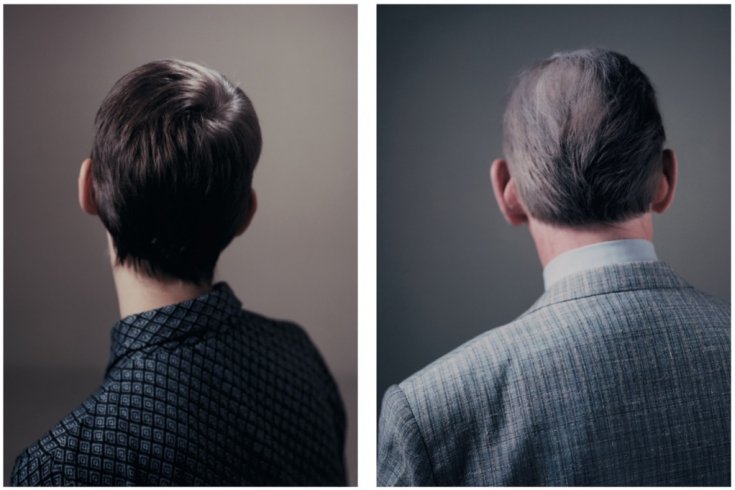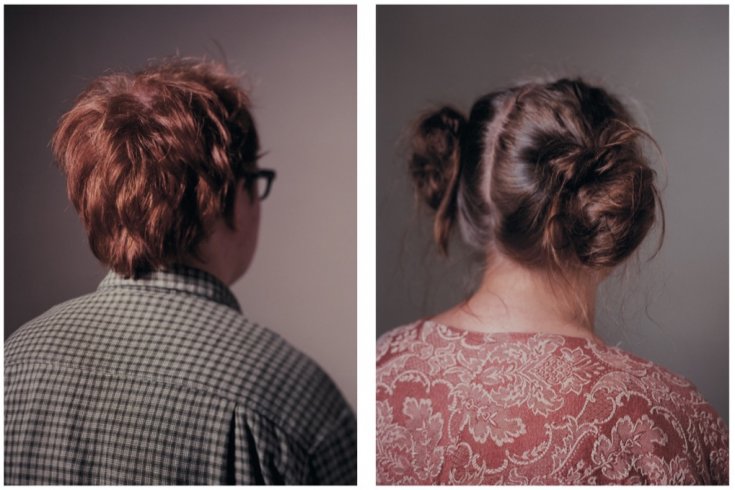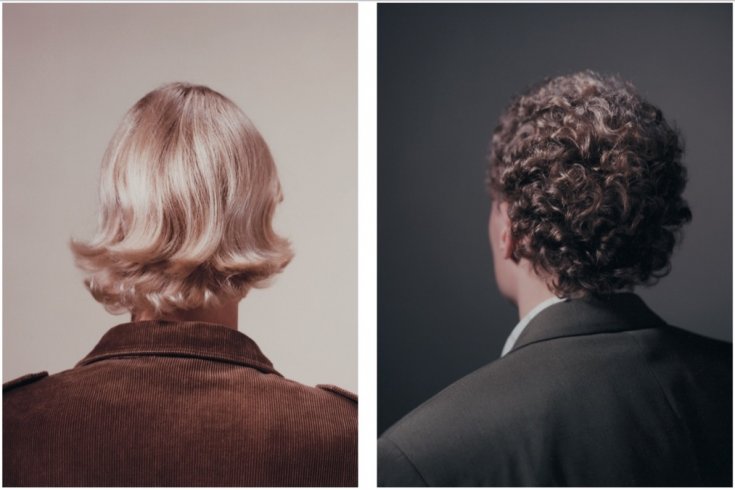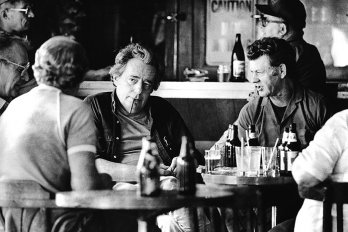Unlike the more cosmopolitan centres of Zurich and Geneva, the city of Berne looks much as it did a century ago. Streetcars still wind their way up and down the main streets, and visitors who climb the tower of the mighty Münster cathedral are still rewarded with a breathtaking view of the Aare River, whose U-shaped curve defines the city, and myriad red-tile roofs. Apart from the cars and the tourists, in fact, the Swiss capital has changed little since the winter of 1902, when Albert Einstein, aged twenty-two, arrived here unemployed, travelling on foot, and carrying all his belongings in a single suitcase.
Einstein had come to the picturesque Swiss capital to take up his first real job: an entry-level position as a technical examiner in a government patent office. The apartment where he once lived, at Kramgasse 49—now a museum—is nestled in a row of modest, low-rise residential buildings in the centre of town. The patent job, tour guide Ruth Aegler tells me in a thick Swiss-German accent, brought in just 3,500 francs a year, barely enough to cover the rent and provide the basic necessities of life for the scientist and his young wife, Mileva. “Einstein was so happy and so proud that he could, for the first time in his young life, rent an apartment like that,” Aegler says. “Only sixty square metres. That’s not much, but for him it was absolutely luxury.”
The Berne museum, called Einsteinhaus, is bracing for an onslaught of Einstein-minded visitors this year, as the world celebrates the hundredth anniversary of Einstein’s annus mirabilis, the “miracle year” in which the young scientist penned four groundbreaking physics papers, including the one that introduced the theory of relativity. The museum has already welcomed nearly a quarter-million visitors from more than 150 countries since it opened in 1979. They stream through its modest, wallpapered rooms, pondering Einstein’s stand-up wooden desk from the patent office, dozens of photographs, and even his high-school report cards. By walking where he walked, breathing his air, and immersing themselves in his world, they hope to gain at least a glimpse of Einstein’s genius.
We live in awe of genius, of those few individuals capable of producing the Mona Lisa, The Tempest, the Fifth Symphony, or the theory of relativity. What makes the mind of a genius different from yours or mine? It is a question that philosophers, historians, psychologists, and educators have wrestled with for more than 2,000 years, with no truly satisfying answer. We are torn between identifying with geniuses and sealing them off behind glass, torn between searching for traits or habits or routines that we can relate to and placing them on another plane altogether, a rarefied world which we can observe, but never enter.
Even defining genius is no trivial matter. It is certainly more than just intelligence, or at least more than the narrow facet of intelligence measured by IQ tests. The physicist Richard Feynman’s IQ was just 122, while biologist Francis Crick’s was 115—still above average but hardly suggestive of Nobel-worthy mental abilities. Meanwhile, some high-IQ people never accomplish much. ( The highest score ever recorded belongs to Marilyn vos Savant, who has an IQ of 228. She earns a living writing a question-and-answer column for Parade magazine.)
Yet we have no problem whatsoever picking out the geniuses from the great lineup of history. When asked to name a genius, we always cite the same few examples. Psychologists in Britain have actually confirmed this habit: in a survey carried out at regular intervals between 1984 and 1997, students were asked to “nominate” three geniuses. Einstein was by far the most frequently cited name, taking the number one position in each year that the survey was carried out. The number two position most often went to Mozart, though on one occasion it went to Newton and once to Freud. Darwin, Shakespeare, and Leonardo da Vinci also consistently rank high.
Our difficulty is not in identifying geniuses but in pinning down the qualities or attributes that allowed them to achieve what they did. Roughly speaking, we want to determine whether geniuses are born or made; whether they come into the world with some special “gift,” or achieve genius-level greatness through some combination of family influence, early environment, and hard work. In other words: is it in their nature, or must a “genius” be nurtured in just the right way in order to blossom?
Good genes certainly don’t hurt. The Bach family produced such a wealth of musical high achievers that one cannot help but consider the role that genes may have played. It couldn’t have done Charles Darwin any harm either that his grandfather Erasmus was a noted physician, botanist, poet, and freethinker who speculated about evolution. Fittingly, Francis Galton, Darwin’s cousin, was among the first to popularize this notion in his 1869 book, Hereditary Genius. (Galton, also remembered as the father of eugenics, has seen his reputation decline sharply in the intervening years.) Others who have tackled the genius question have found a hodgepodge of characteristics that seem to accompany it. The British psychologist Havelock Ellis, in his 1904 Study in British Genius, concluded that the typical genius was fathered by a man over thirty and a mother over twenty-five and that many geniuses were sickly as children. Cesare Lombroso, writing in Italy at about the same time, found that many geniuses were celibate, citing Copernicus, Galileo, Descartes, and Newton as examples—although it has since been shown that Galileo in fact fathered a number of illegitimate children with his mistress.
Those studies, while interesting, seem more like stamp collecting than science and say almost nothing about where or when the next genius will emerge. Newton, Shakespeare, Beethoven, and Michelangelo have no illustrious or even talented ancestors that we know of. And just because you are a genius doesn’t mean your children will be.
(The Einstein family offers a mixed bag of evidence. Albert’s elder son, Hans Albert, became a successful engineer, though not, it seems, of “genius” calibre; his younger son, Eduard, was a first-rate student and was musically talented—something he shared with his father, Albert, and his grandmother Pauline—but he developed schizophrenia at age twenty and lived out his final years in a Swiss mental institution. A daughter, Lieserl, was born before Albert and Mileva had married, and was given up for adoption.)
Those who have probed the Einstein family tree in the reverse direction, looking for the roots of Albert’s genius, have also come up empty-handed. Einstein himself, writing on this subject shortly before his death, was convinced that such a search was pointless. “I know perfectly well that I myself have no special talents,” he wrote. “It was curiosity, obsession, and sheer perseverance that brought me to my ideas . . . Exploration of my ancestors therefore leads nowhere.”
Nor is genius necessarily recognizable in childhood. Sure, Mozart was a prodigy. But Darwin showed no special talents as a child. (He was once told off by his father: “You care for nothing but shooting, dogs, and rat-catching, and you will be a disgrace to yourself and all your family.”) And Einstein, in an oft-repeated observation, was slow to speak. Even when genius does show up in childhood, the debate over just how far back it can be traced, and of the relative import of genes, parents, schooling, and culture, remains.
A look at Mozart’s early years can be instructive. His father, Leopold, was a talented violinist and teacher, and a minor composer to boot. He recognized his son’s latent talents and devoted himself with gusto to building young Wolfgang’s career. Mozart began playing the piano at three and began composing by four or five; by seven he was composing regularly. By that time he had mastered the violin and was able to memorize a lengthy multi-part composition (Allegri’s Miserere) after hearing it performed just a few times. He wrote his first opera at twelve.

And Mozart’s performance skills? Howe reminds us that Mozart practised longer and harder than just about anyone, thanks in large measure to his father, who pushed his son to the limits, subjecting him to “an arduous and unusual regime.” Then come the numbers: let’s assume, Howe offers, that Mozart’s father made him practise for an average of three hours a day from the age of three. By the age of six—the time of his first “European tour,” in which Leopold showed off the talents of both Wolfgang and his sister Nannerl—he would have logged a staggering 3,500 hours of practice—what today’s musicians need in order to reach the level of public performer. The long hours of practice “would largely account for his standard of performing being superior to anything his audience had previously observed in a child of his age,” Howe writes. Indeed, it “would not have been at all surprising if spectators . . . could not give a rational explanation for the feats they were witnessing.”
And Mozart’s ability to remember lengthy musical works? Impressive, Howe admits, but we should note that “although Allegri’s Miserere is a lengthy composition, it is one that happens to contain a great deal of repetition. For a person as knowledgeable as Mozart, that would have lightened the burden of remembering.”
Howe concedes that this is not “a full accounting of his creative achievements,” but he believes it is a solid beginning. It begins to seem conceivable, Howe concludes, “that the underlying capabilities Mozart depended upon may not have been fundamentally different in kind from ones that are shared by numerous men and women with no claim to genius.”
It is a little depressing to see Mozart’s “gift” melt away as we peer into his daily routine and scrutinize the timeline of his major accomplishments. But then, what were we expecting ? He did not emerge from the womb humming Eine Kleine Nachtmusik, and neither Shakespeare nor Rembrandt nor Einstein—nor indeed anyone—was born displaying a specific talent of any kind. But we must be careful here: Howe has not proved that nurture trumps nature. It is still possible, some say likely, that there was something special about Mozart’s brain, something that would have predisposed him to musical talent. Even so, the incredible amount of nurturing bestowed on the young Mozart could only have bolstered whatever nature had provided.

The notion that Mozart and most of his fellow musicians had ten years of practice behind them when they produced their first unambiguously great works fits well with a broader idea known to historians and psychologists as the “ten-year rule”—the idea that a person only makes a world-class contribution to a given art or science after ten years of intensive training and study. Of course, history is often less interested in documenting that laborious process than in celebrating its results, and so “genius” often appears to come out of the blue.
Einstein’s “miracle year” is perhaps the best modern case. Somehow, in the first half of 1905, he managed to publish stunningly original papers on the photoelectric effect, Brownian motion, and the dimensions of molecules, along with the famous text outlining the first part of his relativity theory, now known as special relativity. It is a staggering achievement by any measure, let alone for a twenty-six-year-old patent clerk whose Ph.D. thesis was still under review.
While the spring of 1905 marked the blossoming of Einstein’s ideas, the roots certainly go deeper. By the time the relativity paper appeared, Einstein had spent the better part of a decade teaching himself mathematics, reading the latest scientific literature (as well as the works of philosophers like David Hume and Ernst Mach), and contemplating the nature of the physical world. “I think by the late teen years and the early twenties, he really was immersed in thinking about space and time,” says Michael Shara, an astrophysicist at the Museum of Natural History in New York and the curator of a major Einstein exhibit held there in 2003. “This was not someone who would idly consider this interesting problem for five or ten minutes, or perhaps blab about it for an hour over a cup of coffee,” he says. “This was someone who for nearly ten years really thought of little else.”
This unrelenting drive is seen in nearly every great thinker or creator that one can name, seemingly in accord with Edison’s famous dictum about genius being 99 percent perspiration. It certainly applies to Isaac Newton, the only figure who can challenge Einstein for the honour of greatest physicist of all time. Reflecting on his own annus mirabilis of 1665-66—in which he deduced the laws of motion and gravity, invented calculus, and laid the groundwork for his discoveries in optics—Newton wrote that, at the time, he was simply “in the prime of my age for invention,” and “minded mathematics and philosophy more than at any time since.”
Such single-minded pursuit of one’s calling seems especially prevalent in the arts. Mozart said that composing was his “sole delight and passion.” Beethoven would often spend more than sixteen hours a day composing, often working on three or four works simultaneously. “I live entirely in my music,” he wrote, “and hardly have I completed one composition when I have already begun another.” When composing, his head would sometimes become so hot he needed to douse himself with water, which often soaked through the floor, dripping into the apartment below (a trait which, along with the habit of writing music on window shutters, did little to endear him to his landlords).
The visual arts and literature seem to demand an equally focused mind. The English painter J.M.W. Turner, asked what his secret was, replied that “the only secret I have got is damned hard work.” Picasso said, “I have only one thought: work. I paint just as I breathe.” The poet and novelist Maya Angelou says she is most productive when working in total isolation: “I take a hotel room and ask them to take everything off the walls so there’s me, the Bible, Roget’s Thesaurus, and some good, dry sherry, and I’m at work by 6:30.” Edward Gibbon, labouring on The Decline and Fall of the Roman Empire two centuries earlier, would have understood. “Conversation enriches the understanding,” he wrote, “but solitude is the school of genius.”
No wonder geniuses and especially great artists are often said to be mad. The pursuit of a particular goal, often at the expense of friends, family, and even one’s own health, already takes the artist one step closer to the edge. The link between genius and madness, while controversial, has ancient roots. For Plato, the artist was possessed by a “divine madness”; Aristotle asked, “Why is it that all men who are outstanding in philosophy, poetry, or the arts are melancholic?” In modern times, numerous studies have found strong correlations between artistic creativity and a variety of mental disorders. Research has shown that artists have particularly high rates of mood disorders, especially manic depression (now often called bipolar disorder) and depression.
In her book Touched With Fire: Manic Depressive Illness and the Artistic Temperament, Kay Redfield Jamison of Johns Hopkins University runs through the list of artists confidently diagnosed as manic depressive: Robert Schumann, Vincent van Gogh, Lord Byron, Percy Bysshe Shelley, Herman Melville, Virginia Woolf, Samuel Taylor Coleridge, and Robert Lowell, to name a few. Others linked to serious mood disorders include Ernest Hemingway, Eugene O’Neill, Jean-Paul Sartre, Edvard Munch, Sylvia Plath, Walt Whitman, Cole Porter, Anne Sexton, Gustav Mahler, Mark Rothko, Mark Twain, and Georgia O’Keeffe. In reviewing the scientific literature, Jamison concluded that artists have eight to ten times the rate of major depressive illness, up to eighteen times the suicide rate of the general population, and ten to forty times the rate of manic-depressive illness. Even so, scientists are still struggling to understand exactly how diseases such as manic depression influence creativity. So far, the only thing that seems clear is that in bipolar subjects, artistic productivity can rise sharply during periods of mania and fall as quickly during periods of depression.
Scientific genius, however, seems to require something slightly different from artistic genius. A scientific theory, even one that at first seems counterintuitive, must eventually make contact with the real world through experiment. A scientist must have a firm grip on reality. Yet creativity and intuition do play a role, and the same kinds of unconventional thinking seen in the greatest artists also benefit the scientist. The ability to recognize patterns, for example, and to discern connections between things that at first glance seem dissimilar—these are skills that lie at the heart of many of the greatest discoveries in science. Newton’s insight with the falling apple is the quintessential example. For thousands of years, people had seen apples fall to the ground; for just as long, they had observed the moon passing through its monthly cycle. But it took the genius of Newton to see that the motion of both bodies could be understood as the action of a single force—gravity—and to work out, with rigorous mathematical logic, the equations that govern both.
Darwin, too, had an uncanny ability to make profound mental leaps from commonplace observations. His encounter with the distinguished zoologist John Gould comes to mind: after returning from his voyage to the Galapagos Islands, Darwin showed Gould some of his finch specimens. Gould could see that the birds from different islands had slightly different characteristics, and certainly appeared different from English finches, but he didn’t know what to make of it. He assumed that since God created all living creatures in one swoop, all the members of a particular species—finches, for example—would be the same everywhere. Darwin, the man with far less knowledge and expertise (he didn’t even know the birds were finches) made the intellectual leap: birds in different locations evolved different characteristics over time.
And what of Einstein? He was not the first to contemplate the nature of space and time, nor even the first to struggle with the contradictions between Newton’s mechanics and James Clerk Maxwell’s electromagnetism, the problem that occupied much of his time in the years leading up to his annus mirabilis. The French mathematician J. Henri Poincaré and the Dutch physicist H.A. Lorentz were grappling with many of the same problems. But Einstein took a uniquely broad view, allowing him to discover hidden truths and, where necessary, to abandon cherished ideas. With his 1905 relativity paper, Einstein sent at least two longheld beliefs—Newton’s idea of absolute space and time and the existence of an all-pervasive but invisible “ether”—to history’s dustbin.
One advantage, though it certainly wouldn’t have seemed like an advantage at the time, is that Einstein was an outcast: he was not yet working in the university system and he was not yet exposed to the deeply entrenched ideas of the physics “establishment.” In other words, he had nothing to lose, and, historians argue, the audacious nature of his thinking is reflected in those strikingly original 1905 papers. “He comes in entirely as an outsider,” says Harvard historian Gerald Holton, a leading Einstein scholar. “He has no stakes at all in any of the nineteenth- and the early twentieth- century physics. He comes there in his twenties, with a full-time job, and he lets his mind wander. He’s not endangering his academic position, because he doesn’t have one, and he can take those risks.” The link between genius and lack of exposure to “established” ideas would seem to at least partially explain why geniuses reach their peak at an early age—typically the twenties for math and physics, the thirties for the other sciences and for art, music, and writing.
Even the patent-office job, in hindsight seemingly “beneath” the Person of the Century, might have been exactly the kind of work that would have nurtured Einstein’s mental creativity. It forced him to think visually, to read complicated technical diagrams and assess their merit. Indeed, Einstein often said that in developing his theories, an image would come first; the words and the equations came with great effort, and much later. The Harvard historian Peter Galison points out that many of the proposed devices involved the synchronization of electronic clocks; he wonders if that may have been the critical factor that steered Einstein toward relativity (an argument he makes in his recent book, Einstein’s Clocks, Poincaré’s Maps). What is certain, Holton tells me, is that Einstein “takes a much more Olympian view than any of the others did.” Or, to use the metaphor of the mountain climber, the other scientists were going up the north face of Everest while Einstein was realizing that “it’s the wrong mountain and it’s the wrong face, and you ought to really be hovering above it all and see how the landscape itself goes in all directions.”
Einstein surely had such abilities, but one still might ask: what gave him those abilities in the first place? In the secular age, we no longer ask if such unique talents are a gift from God—but we can still ask, as we did for Mozart, if it was a gift from his neuronal hardware. And, in fact, we have a partial answer. Sandra Witelson, a neuroscientist at McMaster University’s Michael G. DeGroote School of Medicine, studied Einstein’s brain in the 1990s and discovered that it indeed had unusual anatomical features. Witelson found that Einstein’s Sylvian fissure—a divide that runs from the front to the rear of the brain, on both sides—had a very peculiar shape, very different from the ninety-one “control brains” in her investigation. As a result of the fissure’s unique shape, Einstein’s parietal lobes, which lie immediately behind it, were unusually large. What’s more, the parietal lobes are known to be associated with visual, spatial, and mathematical reasoning. For Witelson, that’s no coincidence. “His brain wasn’t nurtured this way. This is nature,” she says. Her conclusion, which she admits is an “unwelcome message in our politically correct world,” is that all the nurturing in the world is unlikely to produce another Einstein. “Environment is crucial, but you can only work with the hardware that you come into the world with,” she says, countering the hypothesis that Einstein’s mental exertion may have been a cause rather than a result of his anatomy.
Even so, it remains a giant leap to extrapolate from Einstein’s cerebral anatomy to the theory of relativity. As the cognitive scientist and linguist Steven Pinker has put it, Einstein “did more than just manipulate mental images. He sought and found images that captured the fundamental aspects of physical reality and converted them into appropriate mathematical equations and empirical predictions. These gifts surely lie in the microcircuitry formed by trillions of synapses in many parts of the brain, and we are not going to work out that wiring diagram in Einstein or anyone else anytime soon.”
It is still a great leap from neural architecture to just about any psychological or physical trait. The human brain is staggeringly complex, and the interplay between genes and environment equally so. Sure, there are a few single-gene diseases and attributes—but in most cases we face an enormous struggle teasing out the intertwined contributions of nature and nurture. (In the weeks before this article went to press, the New York Times Magazine speculated on whether child molesters are born or made, and—apparently of equal significance to some—whether great pro quarterbacks are born or made.)
If you lean out of the window of Einstein’s old living room and look to the left along Kramgasse, you can’t miss the wonderfully preserved thirteenth-century Zytglogge, or clock tower. Given that Einstein was obsessed with time, it is hard not to think of young Albert confronting this enormous timepiece every time he left the apartment. And it is hard not to wonder what exactly it was that led him to a new understanding of the cosmos. Was it the effort to synchronize Berne’s electrical clocks, as Galison argues? Was it something less specific—maybe the general mental workout of poring over those countless patent applications?
The patent job may have helped Einstein in a less direct but perhaps equally valuable way: at the very least, it left his evenings free to discuss physics and philosophy with a close circle of friends, fuelled by Turkish coffee and tobacco, with the young scientist secure in the stability of his job and in the support of a loving wife. “Here, for the first time, he had no financial burden on his young shoulders,” Ruth Aegler, the tour guide, says as I conclude my visit. “He was so happy. He was in love. He had a child. He had a good job. Everything in his life was settled, satisfied.”
But, I wonder, do the roots go farther back? Should we give some of the credit to Max Talmud, the family friend who brought home popular science books for the ten-year-old Einstein to read? Or did the father, Hermann, spark something within young Albert by showing him a magnetic compass at the age of four or five, an event he still recalled decades later? Or was the magical ingredient there in his brain from the beginning, hard-wired into the neurons of his parietal lobe, waiting for the deep chimes of the Zytglogge to unleash it upon the world two-and-a-half decades later?
Finnish photographer Marjaana Kella lives and works in Helsinki. She is repre- sented by Van Zoetendaal Collections in Amsterdam, and Galerie Poller in Frank- furt, Germany.





